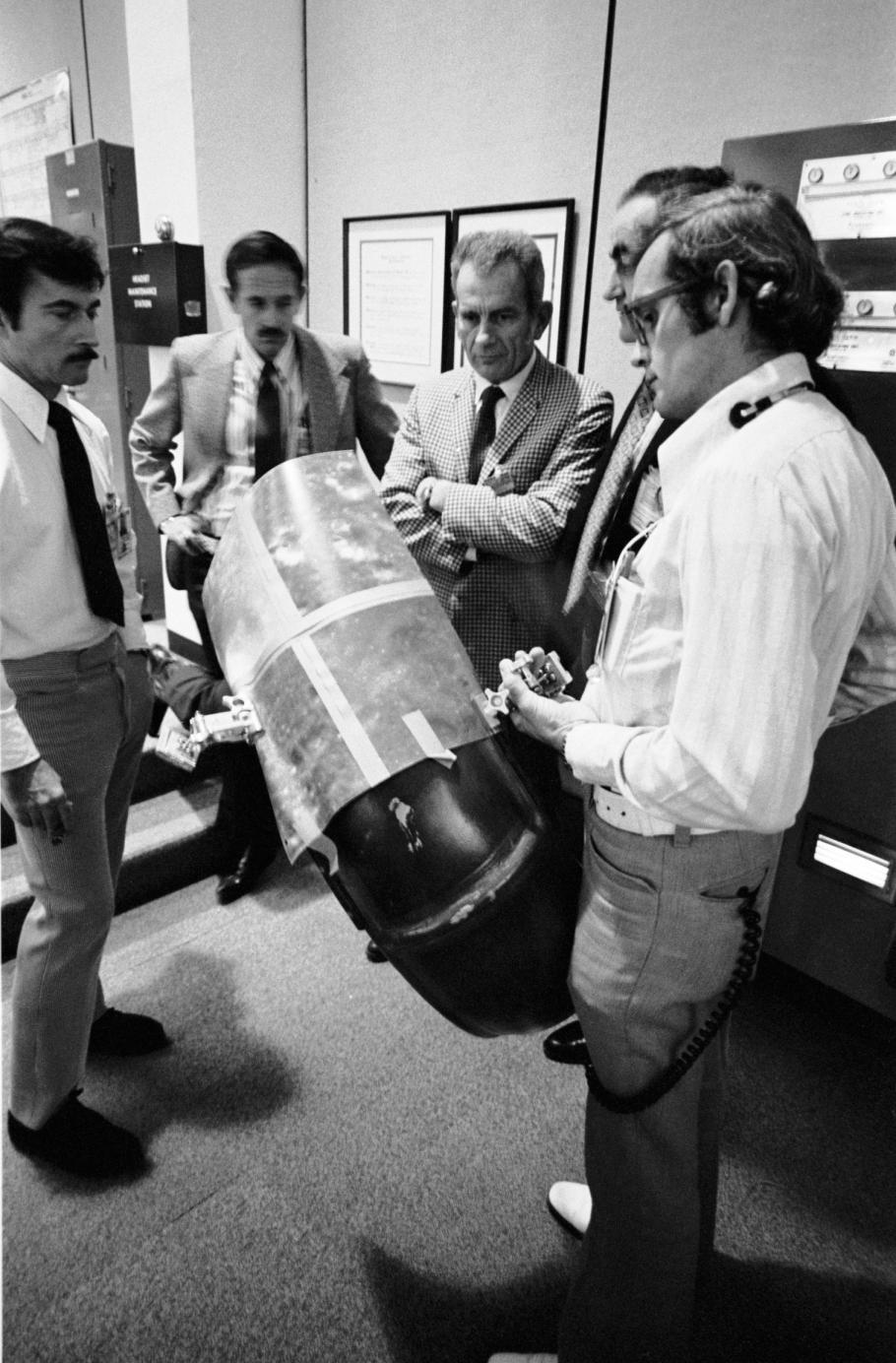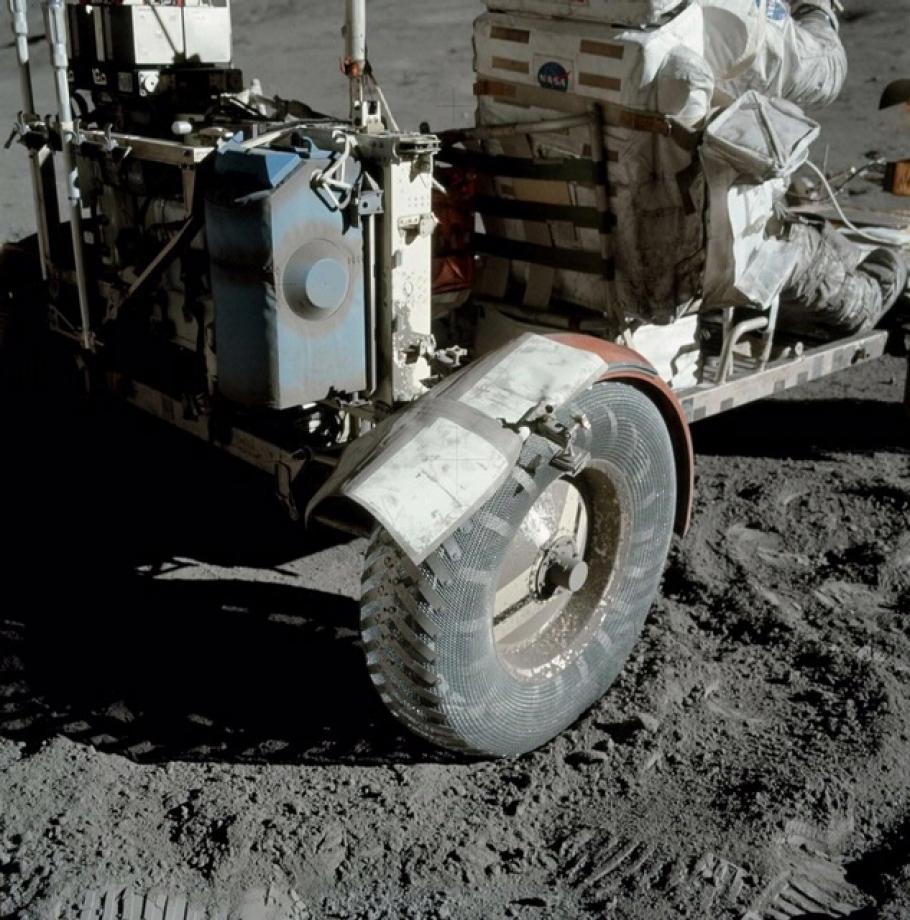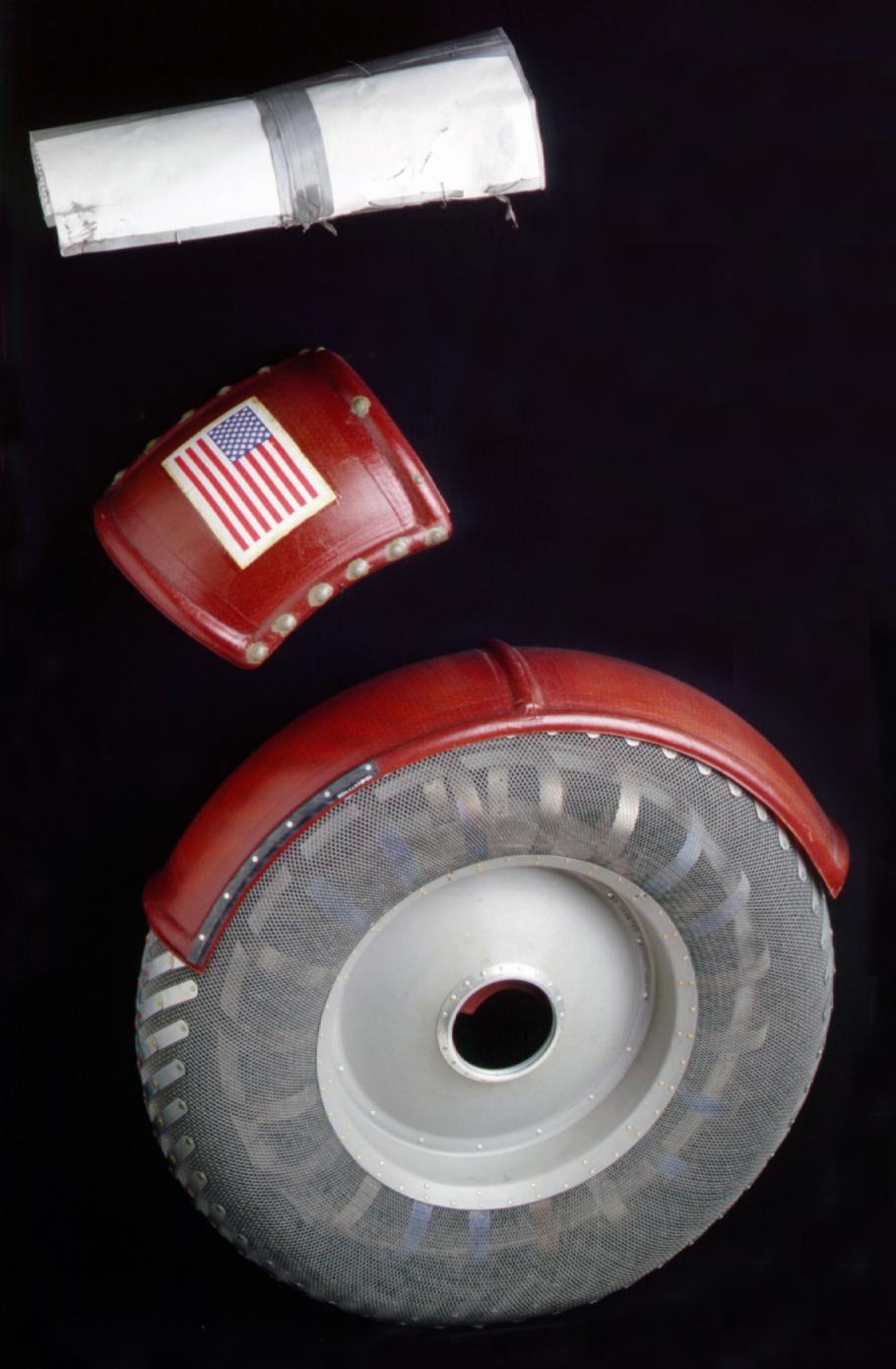When most people think of emergency fixes in space, the first incident that comes to mind is the famous Apollo 13 mission. The astronauts fashioned duct tape and surplus materials into air filtration canisters in the lunar module to keep all three astronauts alive for the entire trip home. You might remember the story from the 1995 Ron Howard film Apollo 13.
An ABC News poll conducted in 2005 asked over a thousand people if they kept duct tape in their emergency kits, 86% of the people polled said they did. NASA is by no means an exception. In fact, labeled officially by NASA as ‘Tape’ in the official stowage lists, every Apollo mission from 11 to 17 carried duct tape with them to the Moon (see page 8 of the Apollo 17 stowage list). Perhaps less known than the Apollo 13 incident, the Apollo 17 mission also owes much to ordinary duct tape.
The Apollo 17 mission left Earth on December 7, 1972 and arrived at the Moon on December 9. Commander Eugene “Gene” Cernan and Lunar Module pilot Harrison “Jack” Schmitt explored the lunar surface while Ron Evans remained in the Command Module, America. While on the surface, Cernan and Schmitt deployed various science experiments across their landing site, making essential use of their Lunar Rover Vehicle (LRV).
This ‘Moon buggy’ made it easier for the astronauts to traverse long distances on the Moon and explore diverse geological landscapes. This was especially important for this mission, since Schmitt was, and still is, the only scientist (a geologist) to travel to the Moon. With his expert knowledge, the Apollo 17 mission gathered unmeasurable amounts of scientific information, owing much of its success to the LRV. During the Apollo 17 mission, the astronauts completed three extravehicular activities (EVA). It was at the end of the first EVA, that trouble arose, placing the mission in serious jeopardy. “Ohhh you won’t believe it,” Gene Cernan groaned as he realized what happened.
“Ohhhh there goes a fender. Oh shoot.”(See the 36 minute mark of this video to hear Cernan.) Cernan’s hammer in one of his suit’s pockets had caught the edge of the back right tire’s fender extension and it popped clean off. This accident might well have totaled the entire LRV. Without the fender extension protecting them from the Moon dust, driving the LRV became a serious hazard.
When dirt is picked up by the woven wire wheels of the LRV in the 1/6 Earth gravity and airless near-vacuum of the lunar surface, it goes much farther than it would on Earth. Much more abrasive than any sand found on earth because the grains are not worn down by wind and water, lunar dust lifted off the surface by the rover wheel could cause catastrophic consequences. Riding without the fender extension caused massive “rooster tails” as Schmitt and Cernan called them, spreading lunar dust all over their instruments and suits and into every nook and cranny. If the darker colored dust were allowed to stay on an instrument for too long, the dust would absorb heat from the sun. This then would heat the instruments to very high temperatures potentially causing them to fail. And not only had dust begun to cover the instruments, but it also began to cover the astronaut’s suits.
The problem of dust was not exclusive to the Apollo 17 astronauts as dust caused certain challenges on previous Apollo missions. Cernan and Schmitt just had to deal with more of the dust because of the broken fender extension.
At the end of the first EVA, before they re-entered the Lunar Module, Cernan stated, “… it's going to take us half a dozen Sundays to dust. Look at that fender; that's terrible.” Cernan had first attempted to re-attach the fender extension with duct tape but due to the dust, the tape lost its adhesiveness and the fender extension fell off driving between experiment sites. A better fix to this very dirty problem was required.
Following the first EVA, while the Apollo 17 astronauts slept, John Young, Charlie Duke, Deke Slayton, Roco Patrone, and Ronald Blevins in Houston came up with a solution. They were challenged with creating a replacement fender with only the materials that the astronauts had on the Moon, knowing that without the fender, the LRV would be practically useless for the rest of the mission. Their solution was to attach four of the 28 lunar maps with what Cernan would later call, “good old-fashioned American gray tape,” carried on board. The maps could be configured in a way that would resemble the fender extension and affixed to the fender with two clamps from the optical alignment telescope.
John Young, Charlie Duke, Deke Slayton, Roco Patrone, and Ronald Blevins work on a repair to the Lunar Roving Vehicle (LRV). During the Apollo 17 mission, the LRV wheel fender is badly damaged. On Earth, the NASA team work to find a solution.
Upon waking up, the astronauts followed their colleagues’ instructions and repaired the fender. The mission continued as planned. Duct tape, once again, saved the day and avoided a possible sticky situation on the Moon.
The four maps used in this lunar repair were returned from the Moon and are now located in the Museum in Washington, DC. The remaining maps from the mission have been donated to the Virginia Kelly Karnes Archives and Special Collections Research Center at Purdue University in West Lafayette, Indiana.
Max Campbell was a 2015 summer intern in the Space History Department at the National Air and Space Museum. He is a graduate student at Purdue University working towards a Masters in History.







